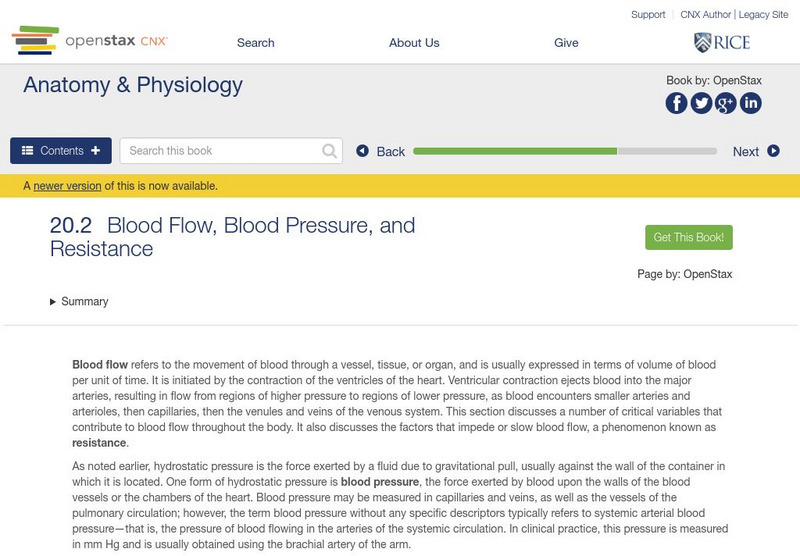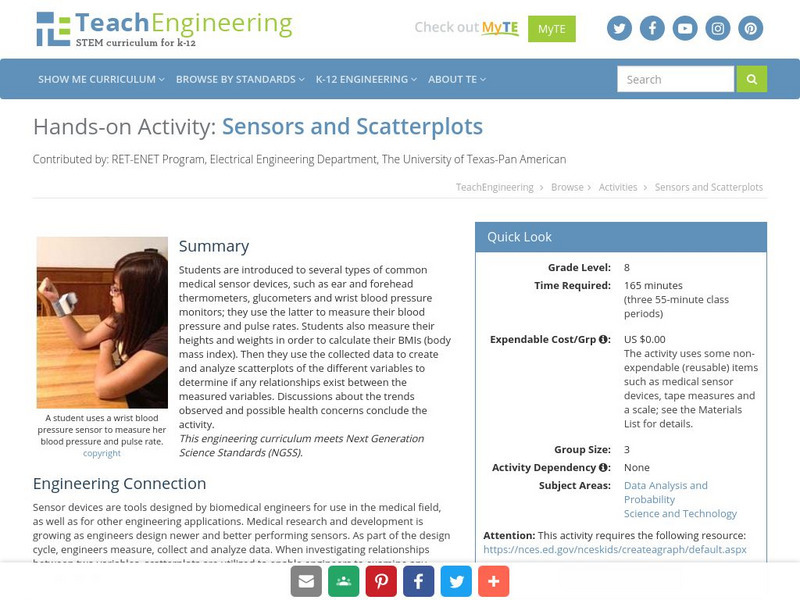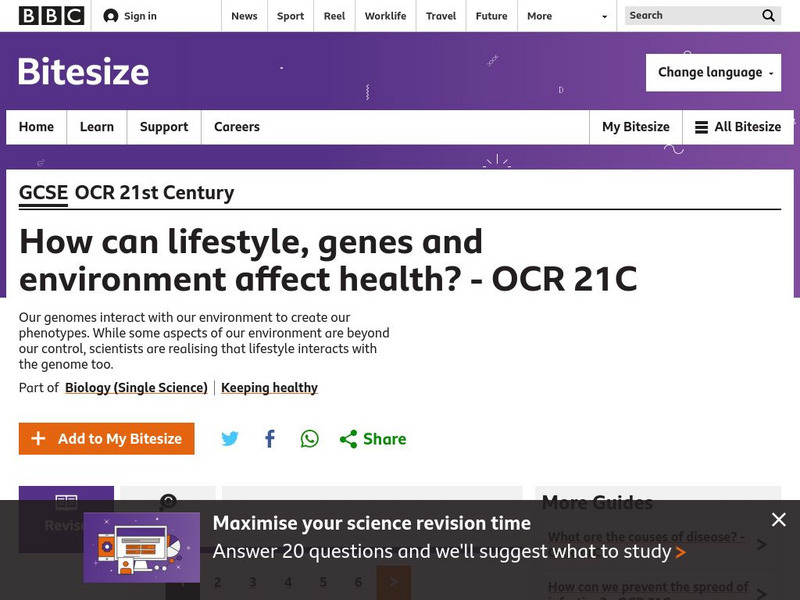LABScI
Circulation and Respiration: Vital Signs
What do your vital signs tell your doctor? An engaging hands-on lesson has your learners monitor their own lung capacity, blood pressure, and heart rate. They then connect the vital measures to the workings of the circulatory and...
Curated OER
Cardiorespiratory Fitness
Students explore cardiorespiratory fitness. In this biology lesson plan, students gain an understanding of pulse rates in order to compare lung capacities of active and inactive males and females. They also learn how to take and compare...
Curated OER
Pulse and Blood Pressure
In this blood pressure activity, students compare their heart rate at rest and after exercise and their blood pressure at rest and after exercise. This activity has 6 fill in the blank and 12 short answer questions.
Curated OER
Pulse and Blood Pressure
Sixth graders monitor and record vital signs of fellow classmates. In this vital sign lesson plan students use medical instruments to measure pulse and blood pressure.
Curated OER
Circulation
In this circulatory system worksheet, students design an experiment to test the circulation of six of their friends. They select and exercise to increase circulation, take pulse and blood pressure readings from each person before and...
Curated OER
Exploring the Circulatory System: Getting to the Heart of It All
Seventh graders study how the heart functions and its parts. In this circulatory system lesson students learn how to take their pulse, blood pressure and respiration.
Curated OER
Health and Diseases
In this recognizing health and diseases instructional activity/quiz, students match symptoms with diseases, translate underlined words in sentences, categorize ways drugs are taken, match symptoms with explanations, and fill in blanks...
Curated OER
Fire and EMS Search
In this career worksheet, students find the words used to define aspects of a firefighter's job and the answers are found at the bottom of the page.
Curated OER
Circulation
In this circulation learning exercise, students review the circulatory system including the structures and functions of this system. This learning exercise has 5 word scramble, 4 short answer, 1 fill in the blank, and 6 true or false...
Curated OER
Stress, Coping and Health
In this psychology worksheet, students complete 5 short answer questions on possible reasons for stress and how to cope with it.
Curated OER
Weight Training: Lifetime Fitness
Students research the relationship between physical activity and the prevention of illness, disease and premature death. Students understand that working out regularly will increase muscular strength, endurance and improve many areas of...
Curated OER
Why Be Active?
Are there benefits to being physically active? Yes! There are both short-term and long-term benefits! Being physically active doesn't just have strengthen you physically, but also emotionally and socially. Learners find out how to...
Curated OER
Why Be Active?
What are some of the benefits of physical activity? Young learners take a look at not just the physical benefits, but also the emotional and social benefits of being physically active. There is a heart rate activity to count their...
Curated OER
Marine Mammal Diving Reflex
Tenth graders discuss marine mammal diving reflex, and measure pulse rate while holding their breath under three conditions: control, warm water, and ice water to determine if humans exhibit marine mammal diving reflex.
Curated OER
Cardiac Function
In this health worksheet, students look for the connections needed to attain the knowledge of cardiac function. The sheet includes the background information.
Curated OER
The Magic School Bus Works Out
Students learn along with Ms. Frizzle's class. In this Magic School Bus lesson plan, students make a personal heart profile of an important member of their own hardworking team.
OpenStax
Open Stax: Anatomy & Physiology: Blood Flow, Blood Pressure, and Resistance
Learn about the components and measurement of arterial blood pressure, as well as the variables affecting blood flow and blood pressure in this learning exercise.
Science Museum of Minnesota
Science Museum of Minnesota: Your Heart and Lungs
Learn everything you've ever wanted to know about your heart and lungs as you journey through this human gallery. Animations, videos, lessons and links to new technologies are included.
TeachEngineering
Teach Engineering: Sensors and Scatterplots
Students explore the use of several biomedical engineering sensor devices, and then use the collected data to create and analyze scatterplots of the different variables to determine if any relationships exist between the measured...
BBC
Bbc: Gcse Bitesize: How Can Lifestyle, Genes and Environment Affect Health? Oc
This lesson focuses on Cardiovascular disease. The heart requires its own constant blood supply in order to keep beating and this is delivered through the coronary arteries. Genetic and lifestyle factors can lead to the coronary arteries...
National Cancer Institute at the National Institutes of Health
Seer Training Modules: Introduction to the Cardiovascular System
Self-guided learning activity where students learn about the structure and function of the human cardiovascular system. There is a short quiz at the end of the lesson to check for understanding.



















